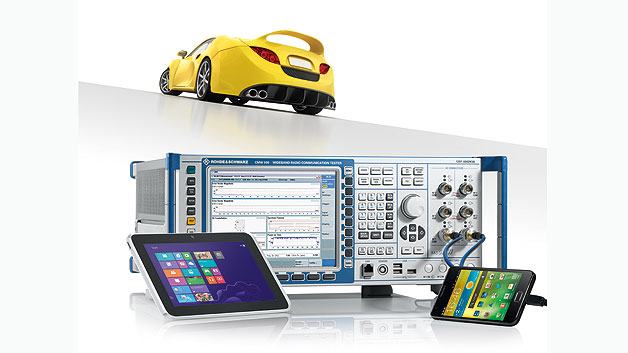- The R&S CMW500 LTE network simulator and the Rohde & Schwarz R&S SMBV100A GNSS simulator now support safety scenarios for the certification of V2X (Vehicle to Everithing) communication devices.
- With Qualcomm Technologies’ Qualcomm 9150 Cellular Vehicle-to-Everything (C-V2X) solution, it is possible to validate C-V2X Direct Communications (PC5) Mode 4 (out-of-network coverage) capable devices as defined in 3GPP Release 14.
C-V2X communication technologies allow vehicles to communicate directly with each other (V2V), with other road users, including pedestrians (V2P), and with road infrastructure (V2I) without a mobile phone subscription or network assistance. They operate in the 46D and 47 bands for the 5.8 GHz and 5.9 GHz ITS frequency bands. Vehicle synchronization is based on existing satellite geolocation technologies (GNSS).
The R&S CMW-KU514 C-V2X software of the R&S CMW500 is used to check end-to-end data transmission and reception over the PC5 interface under ideal conditions, or in the presence of fading or channel congestion. Cases of future use concern the exchange of a message from one vehicle to another during an emergency brake application, or the sending of a car alert to a pedestrian occupied by his smartphone while crossing a street. Traffic lights could transmit a countdown display on a car’s dashboard, indicating the time remaining until they pass a red light.
Testing C-V2X equipment through its application layer is essential for the safety of connected vehicles. The connected vehicles carry sensors (radar, lidar and camera) to detect events within their range. They use LTE mobile communication technology in direct (PC5) and network (Uu) communication modes to provide information on events that occur beyond the range of on-board sensors. They can thus obtain information relating to the synchronisation of traffic lights (SpaT).
While direct PC5 communications address active safety scenarios where latency is critical, such as collision avoidance, network communications (Uu) extend the communication range by enabling vehicle-to-network (V2N) exchanges to provide information on future traffic conditions, traffic optimization according to traffic lights, speed limits, etc., as well as the ability to provide information on the traffic situation.






